#U. a. horribilis
Text
141 Bear! Edition
Cause what if 141 were bears?
Including bear facts ! Why? Because bears are cute. 💕
Ghost: Spirit Bear "Kermode Bear"
Ursus americanus kermodei

A subspecies of the American Black Bear that lives exclusively on the coastal shores of British Columbia, Canada.
They are not actually albinos, but instead have a recessive gene that causes the white pigmentation to their fur and eyes. For example, two black 'kermode bears' with the recessive gene can produce a white furred bear.
The white fur is thought to be advantageous towards hunting salmon, as it is theorised that the white colour makes it harder for fish to evade them.
Soap: Sun Bear
Helarctos malayanus
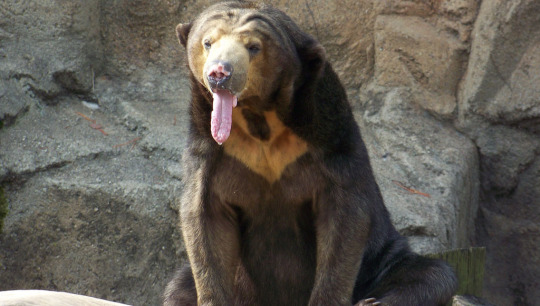
An Asiatic bear that stands as the smallest of all bear species, ranging from northeastern India and extending south to Bangladesh, Myanmar, Thailand, Cambodia, Laos, and Vietnam to Brunei, Indonesia, and Malaysia.
They measure between 4-5 ft from tail to snout and weigh between 55- 145 lbs. It is an excellent climber that is known to be the most arboreal of all bears.
Their name is derived from the orangey- cream colour 'sun' crest on their chest. Another name for them is Honey Bear or beruang madu, in Malay/Indonesian due to their love of feeding on honey combs.
Gaz: Cinnamon Bear
Ursus americanus cinnamomum
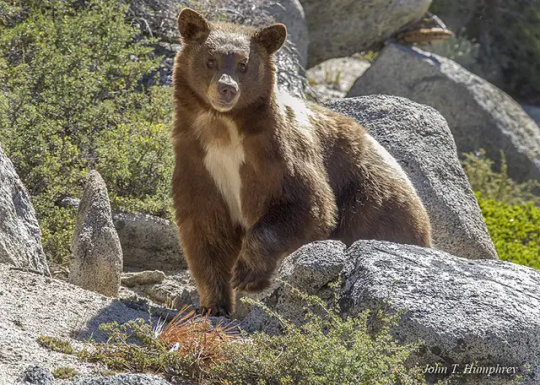
Another subspecies and colour morph of the American Black Bear. It is thought to exist and interbreed with the black coloured American Black Bears.
The name is derived from the brown to red-brown fur colour that resembles cinnamon. It's coat colouration is theorised to be a mimic of grizzly bears who may also cohabit the same areas.
Price: Grizzly Bear "North American Brown Bear"
Ursus arctos horribilis

Despite being known as the 'grizzly bear' or 'grizzly', the bear is categorised as a subspecies or pop. of the Brown Bear, a species that originates in Eurasia. It is thought that this subspecies/pop. migrated to North America between 177,000 BP ~ 111,000 BP.
There are other morphological forms of brown bears in North America also termed as 'grizzly' that were once considered subspecies but is now synonmised with Ursus arctos horribilis, such as the "Kodiak Bear and the "Alaska Peninsular Bear". The 'grizzly bear' historical range starts from Alaska to Mexico, taking in consideration of past subspecies that are now extinct, though it's current population is situated mainly in North America.
It's name came from the descriptor 'grisley' which can be read as 'grizzled' - grey haired, or "grisly" -fearsome, inspiring, though it was formally classified as U. horribilis, for it's terrible character in 1815.
+
*all facts taken from wiki. If there are any mistakes let me know!
#call of duty#cod mwii#cod mwiii#call of duty modern warfare#bears#bear facts#john soap mactavish#captain price#kyle gaz garrick#simon ghost riley#cod mw2
34 notes
·
View notes
Text

9 Januari 2016.
Ik ging naar de kroegen
Ik had zeven jaar geen café van binnen gezien. Daarom vond ik het tijd worden voor een kroegentocht. Ik stond vijf jaar vrijwel droog; ik vond dat ik een verzetje verdiend had, na een annus horribilis met vier amputaties en zeven maanden van oudtestamentische pijn.
Welgemoed begaf ik me in racekar Anne-Rose op weg naar het dorpshart. Halverwege, bij het gemeentehuis, hield een handvol grotere pubers me aan. Ze zaten op een bankje. De langste vroeg waarom ik geen benen meer had. Ik legde het uit. Hij zei: “Dat is wel heavy kut wat u overkomen is.”
Ik vroeg waar ze uitgingen. De lange zei dat er voor de jeugd niets te doen was in Venray. In het plaatselijke weekblad las ik over een desolate soos met weinig aanloop ondanks hevige subsidiemaatregelen.
Ik zei dat ik naar café Goesting ging, om mijn kroegentocht af te trappen. Dat leek de lange een goed idee, voor een type van mijn leeftijd. Toen ik wegreed, zei hij: “Niet teveel drinken, anders laten de kakkerlakken u blazen.”
In café Goesting stuitte ik op een muur van goedgeklede twintigers, die een hoger opgeleide indruk maakten. Aan de muur versleten Perzische tapijten, van de soort waarop The Black Crowes hun concerten spelen.
Een knappe ober die op de jonge Martin Bril leek vroeg wat ik wilde drinken. Ik zei dat mijn vriendin over vijf minuten zou arriveren, en vroeg naar de cocktailkaart. Desgevraagd deelde ik de ober mee dat ik vroeger graag Bloody Mary’s dronk, maar alleen op vakantie, op voorwaarde dat de hotelbar Hopperiaans genoeg was. De ober zei: “Ik maak straks een strakke Bloody Mary voor je.”
Toen mijn vriendin na vijf minuten nog niet was gearriveerd, vertrok ik enigszins gegeneerd. Ik kon die toegewijde ober moeilijk opbiechten dat ik door de schuldsanering geen geld had voor een Spa Blauw.
Maar in café Hulsman, even verderop aan het plein, werd ik vrijwel meteen na binnenkomst, waarbij een soort verpleegkundige met veel égards de deur voor me open hield, verwelkomd door Jo uit Overloon, die vroeg wat ik wou drinken.
Even later wist ik dat Jo verslaafd was geweest aan alcohol, gokken en cocaïne. Hij had in dezelfde kliniek gezeten als ik, even verder in het dorp. Hij twaalf maanden, ik zeven.
“Nu ben ik van alles af”, zei Jo, met een fluitje Brand in de rechterhand. “Bier drink ik alleen weer recreatief.” Zijn goed doorbloede huid en vermoeide ogen zouden een ander verhaal kunnen vertellen, maar de junkenetiquette schrijft voor dat dergelijke zaken niet benoemd worden.
“Ik heb het in de hand”, zei Jo.
“Dat zie ik”, zei ik.
Een afgetrainde blondine van rond de 35 in strak zwart wees naar de restanten van mijn benen en zei: “Doet het pijn?” Ik zei: “Vanavond niet.”
Ik zette koers naar uitbating Moment, waar ik nieuwjaarsnacht discussieerde met een dronken Marokkaan, die zeker meende te weten dat ik een stille in burger was. Hij tilde mijn muts een stukje op om te kijken of ik een oortje had. Ik zei: “Heb je ooit een stille in een rolstoel gezien?” Met grote stelligheid zei hij: “Ik wel, met de kermis. Maar jij was het niet.” Zijn Marokkaanse vriendin, ook dronken, ontzette me met veel misbaar en verwijten, ik bedoel richting haar amant.
Nu was Moment vrijwel verlaten. Een Molukse beveiliger in een grijs pak dat hem goed stond, liet me vriendelijk binnen. Het biljart en de flikkerende sportzendertelevisies deprimeerden me onmiddellijk. Aan de bar raakte ik verzeild in een gesprek met een jong Pools stel. We spraken een mengelmoes van Duits, Engels, Pools en Nederlands. Ze werkten in de tuinbouw. Het meisje zei: “Venray is een vakantiedorp. Er wonen alleen wel veel gekken.” Dit beaamde ik.
In café De Uitmarkt, even verderop, zwaaide ik naar een journaliste van het plaatselijke mediabedrijf. Maar het bleek een dubbelganger, die me verwonderd aanstaarde. Mijn bijziendheid speelde me op. Mijn linkeroog is lui, het rechter ziet alleen ver goed. Daardoor zie ik alles een beetje wazig, wat me altijd wel beviel – ik droeg mijn brillen vaker niet dan wel. De look-a-like bleef me maar aankijken, iets bourbonachtigs in de rechter hand. Ik ging er vandoor.
Buiten herinnerde ik me wat een studievriend in Tilburg me altijd voorhield: “Drank maakt meer lief dan je kapot is.”
0 notes
Text
I’m seeing more and more questionable takes on why it’s ok for SU to have brought up incredibly politically charged storylines and themes and allusions and worldbuilding elements with no intention to ever really explore them beyond: Steven & friends will have to work through the sad feels they have because of these things (but never on the things themselves. At best that’ll be implied to have happened offscreen). And like.
#this show and its creators have been unfairly and horribily attacked but still there's some v legitimate criticisms to be made here#at this point it's undeniable#and if u feel like to defend it u have to go: 'it's just a kids show it's not that deep' and 'it was never meant to be political' then uhhhh#that's not a good sign#like the show didn't have to go there if it didn't want to! that was a choice that the show made!#*sigh*#like hell i'm tagging this
3 notes
·
View notes
Photo
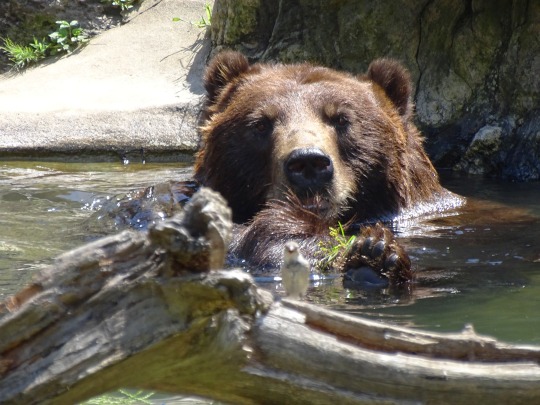
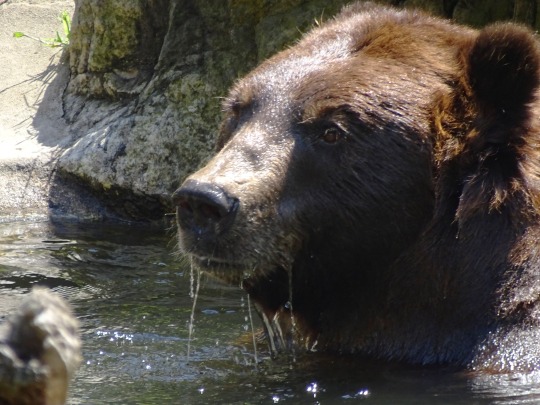

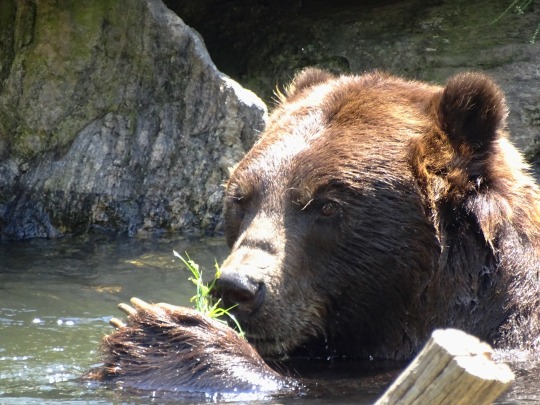

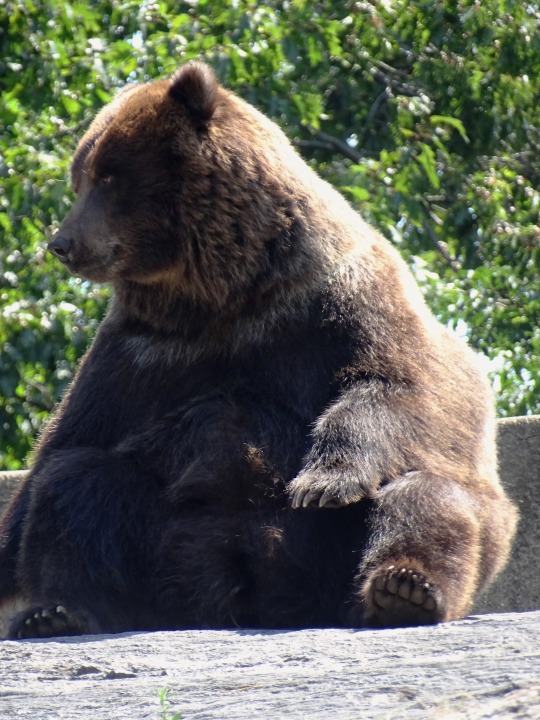


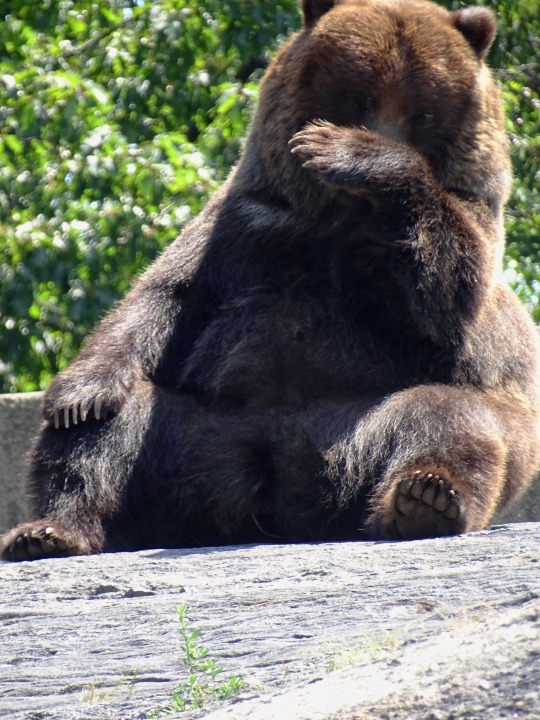
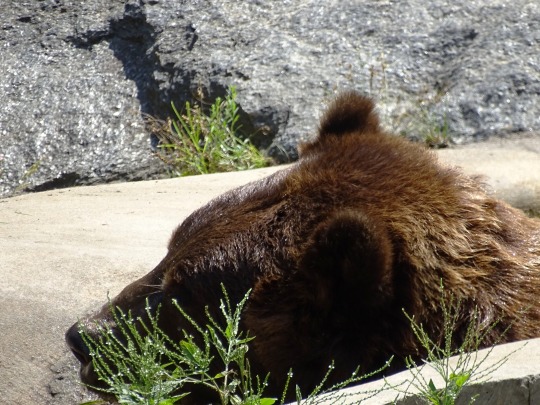
Brown Bear, Bronx Zoo (No. 4)
There are many methods used by scientists to define bear species and subspecies, as no one method is always effective. Brown bear taxonomy and subspecies classification has been described as “formidable and confusing,” with few authorities listing the same specific set of subspecies. Genetic testing is now perhaps the most important way to scientifically define brown bear relationships and names. Generally, genetic testing uses the word clade rather than species because a genetic test alone cannot define a biological species. Most genetic studies report on how closely related the bears are (or their genetic distance). There are hundreds of obsolete brown bear subspecies, each with its own name, and this can become confusing; Hall (1981) lists 86 different types, and even as many as 90 have been proposed. However, recent DNA analysis has identified as few as five main clades which contain all extant brown bears, while a 2017 phylogenetic study revealed nine clades, including one representing polar bears. As of 2005, 15 extant or recently extinct subspecies were recognized by the general scientific community.
As well as the exact number of overall brown bear subspecies, its precise relationship to the polar bear also remains in debate. The polar bear is a recent offshoot of the brown bear. The point at which the polar bear diverged from the brown bear is unclear, with estimations based on genetics and fossils ranging from 400,000 to 70,000 years ago, but most recent analysis has indicated that the polar bear split somewhere between 275,000 and 150,000 years ago. Under some definitions, the brown bear can be construed as the paraspecies for the polar bear.
DNA analysis shows that, apart from recent human-caused population fragmentation, brown bears in North America are generally part of a single interconnected population system, with the exception of the population (or subspecies) in the Kodiak Archipelago, which has probably been isolated since the end of the last Ice Age. These data demonstrate that U. a. gyas, U. a. horribilis, U. a. sitkensis and U. a. stikeenensis are not distinct or cohesive groups, and would more accurately be described as ecotypes. For example, brown bears in any particular region of the Alaska coast are more closely related to adjacent grizzly bears than to distant populations of brown bears, the morphological distinction seemingly driven by brown bears having access to a rich salmon food source, while grizzly bears live at higher elevation, or further from the coast, where plant material is the base of the diet. The history of the bears of the Alexander Archipelago is unusual in that these island populations carry polar bear DNA, presumably originating from a population of polar bears that was left behind at the end of the Pleistocene, but have since been connected with adjacent mainland populations through movement of males, to the point where their nuclear genomes are now more than 90% of brown bear ancestry.
Brown bears are apparently divided into five different clades, some of which coexist or co-occur in different regions.
Source: Wikipedia
#Brown bear#brown bear exhibit#Sitka brown bear#Grizzly Bear#animal#ABC Islands bear#Ursus arctos sitkensis#Ursus arctos#pond#water#flora#fauna#bathing#eating#sitting#Bronx Zoo#my favorite zoo#the Bronx#New York City#summer 2019#outdoors#tourist attraction#landmark#USA#Eastern USA#original photography
37 notes
·
View notes
Note
So now that this is shaping up to be annus horribilis 2.0 do u think this makes it easier to announce a Sussex separation sometime this year ?
Probably, but we are not there yet.
34 notes
·
View notes
Photo


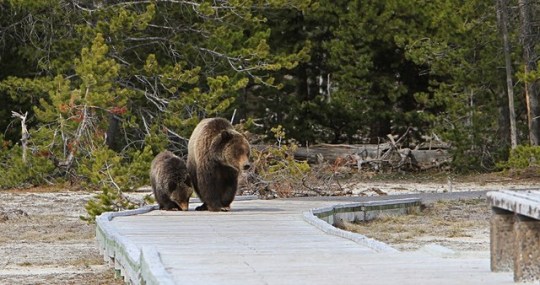


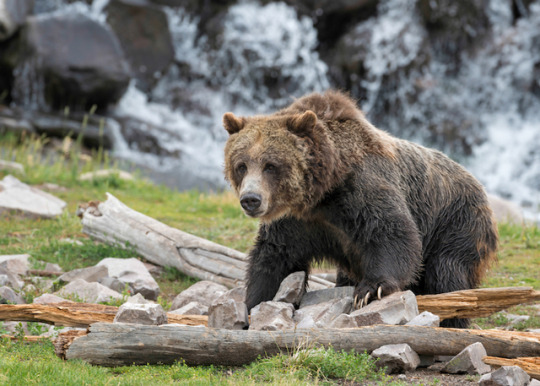

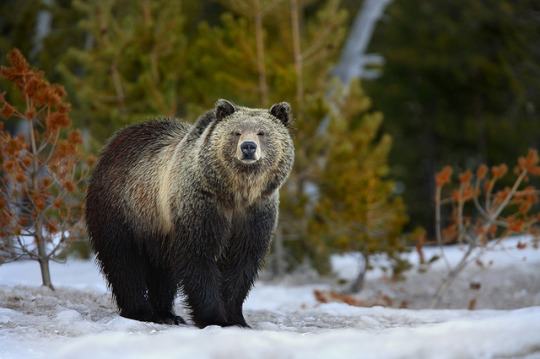
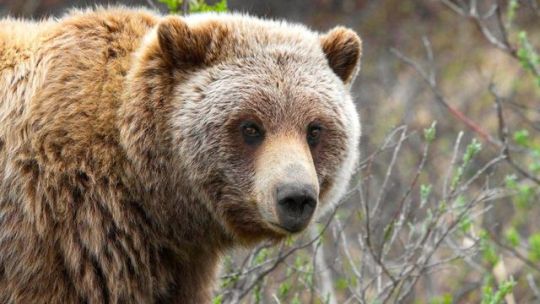
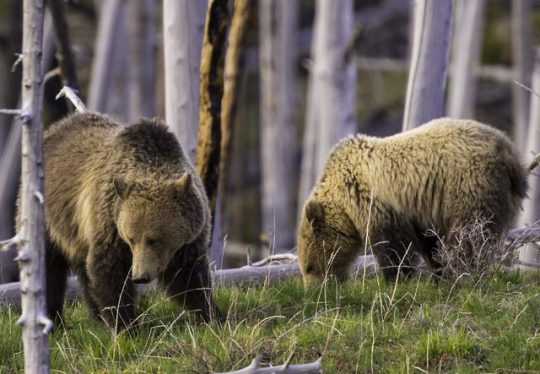
The grizzly bear (Ursus arctos ssp.) is a large population of the brown bear inhabiting North America. Meriwether Lewis and William Clark first described it as grisley, which could be interpreted as either "grizzly" (i.e., "grizzled"—that is, with golden and grey tips of the hair) or "grisly" ("fear-inspiring", now usually "gruesome"). The modern spelling supposes the former meaning; even so, naturalist George Ord formally classified it in 1815 as U. horribilis, not for its hair, but for its character.
Brown bears originated in Eurasia and traveled to North America approximately 50,000 years ago, spreading into the contiguous United States about 13,000 years ago. In the 19th century, the grizzly was classified as 86 distinct species. However, by 1928 only seven grizzlies remained and by 1953 only one species remained globally. However, modern genetic testing reveals the grizzly to be a subspecies of the brown bear (Ursus arctos). Rausch found that North America has but one species of grizzly. Coastal grizzlies, often referred to by the popular but geographically redundant synonym of "brown bear" or "Alaskan brown bear" are larger and darker than inland grizzlies, which is why they, too, were considered a different species from grizzlies. Kodiak grizzly bears were also at one time considered distinct. Therefore, at one time there were five different "species" of brown bear, including three in North America.
Although variable in color from blond to nearly black, grizzly bear fur is typically brown with darker legs and commonly white or blond tipped fur on the flank and back. A pronounced hump appears on their shoulders; the hump is a good way to distinguish a grizzly bear from a black bear, as black bears do not have this hump. Aside from the distinguishing hump a grizzly bear can be identified by a "dished in" profile of their face with short, rounded ears, whereas a black bear has a straight face profile and longer ears. A grizzly bear can also be identified by its rump, which is lower than its shoulders, while a black bear's rump is higher. A grizzly bear's front claws measure about 2–4 inches in length and a black bear's measure about 1–2 inches in length.
Most adult female grizzlies weigh 290–400 lbs, while adult males weigh on average 400–790 lbs. Average total length is 6.50 f), with an average shoulder height of 3.35 ft. Newborn bears may weigh less than 500 grams (1.1 lb). One study found that the average weight for an inland male grizzly was around 600 lbs and the average weight for a coastal male was around 900 lbs. For a female, these average weights would be 300 lbs inland and 500 lbs coastal, respectively. On the other hand, an occasional huge male grizzly has been recorded which greatly exceeds ordinary size, with weights reported up to 1,500 lbs. A large coastal male of this size may stand up to 9.8 ft tall on its hind legs and be up to 4.9 ft at the shoulder.
In preparation for winter, bears can gain approximately 400 lbs, during a period of hyperphagia, before going into hibernation. Grizzly bears hibernate for 5–7 months each year except where the climate is warm, as the California grizzly [extinct] did not hibernate. During this time, female grizzly bears give birth to their offspring, who then consume milk from their mother and gain strength for the remainder of the hibernation period. To prepare for hibernation, grizzlies must prepare a den, and consume an immense amount of food as they do not eat during hibernation. Grizzly bears do not defecate or urinate throughout the entire hibernation period. The male grizzly bear's hibernation ends in early to mid-March, while females emerge in April or early May.
In North America, grizzly bears previously ranged from Alaska down to Mexico and as far east as the western shores of Hudson Bay; the species is now found in Alaska, south through much of western Canada, and into portions of the northwestern United States (including Idaho, Montana, Washington, and Wyoming), extending as far south as Yellowstone and Grand Teton National Parks. It is most commonly found in Canada.
There are currently about 55,000 wild grizzly bears total located throughout North America, most of which reside in Alaska. Only about 1,500 grizzlies are left in the lower 48 states of the US. Of these, about 800 live in Montana. About 600 more live in Wyoming, in the Yellowstone-Teton area. There are an estimated 70–100 grizzly bears living in northern and eastern Idaho. Its original range included much of the Great Plains and the southwestern states, but it has been extirpated in most of those areas. Combining Canada and the United States, grizzly bears inhabit approximately half the area of their historical range.
The average lifespan for a male is estimated at 22 years, with that of a female being slightly longer at 26. Females live longer than males due to their less dangerous life; they do not engage in seasonal breeding fights as males do. The oldest wild inland grizzly was 34 years old in Alaska; the oldest coastal bear was 39, but most grizzlies die in their first few years of life from predation or hunting. Captive grizzlies have lived as long as 44 years.
Except for females with cubs, grizzlies are normally solitary, active animals, but in coastal areas, grizzlies gather around streams, lakes, rivers, and ponds during the salmon spawn. Every other year, females produce one to four young (usually two) that are small and weigh only about 450 grams (1 lb) at birth. Cubs are always born in the mother's winter den while she is in hibernation. Female grizzlies are fiercely protective of their cubs, being able to fend off predators as large as male bears bigger than they are in defence of the cubs. Cubs feed entirely on their mother's milk until summer comes, after which they still drink milk but begin to eat solid foods. The mother cares for the cubs for up to two years, during which the mother will not mate.
Grizzlies are considered more aggressive compared to black bears when defending themselves and their offspring. Grizzly bears are especially dangerous because of the force of their bite, which has been measured at over 8 megapascals (1160 psi). It has been estimated that a bite from a grizzly could even crush a bowling ball. Unlike the smaller black bears, adult grizzlies do not climb trees well and respond to danger by standing their ground and warding off their attackers. Grizzly bears normally avoid contact with people. In spite of their obvious physical advantage they rarely actively hunt humans. Most grizzly bear attacks result from a bear that has been surprised at very close range, especially if it has a supply of food to protect, or female grizzlies protecting their offspring. Mothers defending cubs are the most prone to attacking, and are responsible for 70% of humans killed by grizzlies. Exacerbating this is the fact that intensive human use of grizzly habitat coincides with the seasonal movement of grizzly bears.
292 notes
·
View notes
Text
Tags: U
u m a m i
UFOs
ungulates
unicorns
Up in Smoke
upload
uromastyx
Ursus americanus
Ursus arctos
Ursus arctos californicus
Ursus arctos horribilis
Ursus maritimus
Ursus spelaeus
[back]
0 notes
Photo

December 31, 1917 - Looking Back on 1917
Pictured - Putting a brave face on Annus Horribilis for the Entente.
1917 was not a year that most people in Britain and France would look back on with pleasure. It had begun with optimism in the wake of the Somme and Verdun: the Allied armies were bloodied, yes, but grown experienced and battle-hardened. Their generals promised victory in the new year, Nivelle in Champagne, Haig in Flanders.
The victory did not come. Instead, 1917 was a year of constant setbacks for the Allies. The largest, of course, came in Russia. In February 1917 the Tsar abdicated in the face of revolution, and Kerensky and the Russian Republic rose in his stead. At first this seemed like a very good thing to Russia’s allies. Germany had long played a game of “what-about-ism” by calling the Entente hypocrites, championing self-determination while allied to the most autocratic nation in Europe. Except for poor Nicky, the downfall of Tsarism therefore proved quite useful to the Allies, who now could truly claim to be a democratic alliance opposed to Central Powers militarism. The second great gain for the Allies was similar - the great democracy itself, the United States, had finally joined in, after German submarine warfare irked the the Americans to the point of no return.
But despite these advantages, 1917 did not prove a very lucky year for the Entente. The Russian Republic’s war effort proved just as disastrous as the Tsar’s, and the Germans were on Petrograd’s doorstep while the Russian army melted away. Then in November, a radical group of communists called the Bolsheviks overthrew Kerenskey, and set about making peace with Germany and bringing Russia out of the war. The Entente was falling apart in the East - Romania surrendered in December too. The Americans were not yet in to make the difference, because they had no real army - they needed the whole year to train and equip, and only a paltry few regiments would be in Europe before 1918, and even then would need much of that year, too.
It fell to the Western Allies, then, to win the war, but things did not go their way. The Nivelle Offensive launched in April 1917 was one of the worst disasters of the war. French soldiers were decimated as they left their trenches. In response to the failure of their generals, the poilus went on strike, and mutiny swept over the French army. Only the swift response of Henri Pétain, who promised leave and more competent planning, ended the rebellion (as well as the execution of a few ringleaders,) but the French army was fit only for defense, and not offense, going into 1918.
The Italians cracked in 1917 too, smashed at Caporetto in October in perhaps the greatest Central Powers victory of the war. The British Expeditionary Force did not crack, but it was dealt a horrible bloody nose at Passchendaele, where many men drowned in the mud as well as were slaughtered by German machine-gun fire as they tried to advance through it. At sea, the British blockade was having a dire effect on Germany’s food situation, but a determined U-boat campaign (the same that brought the US into the war) was taking a severe toll on British shipping, forcing the island nation to consider going to siege rations itself.
In short, then, 1917 had been a bad year for the Entente. The alliance had fared poorly in the West, and essentially collapsed in the East. This was the great threat - if Russia made peace, Germany and Austria might ship millions of men from Galicia and the Baltic to Flanders, where they might crush Britain and France before enough Americans arrived in 1918 to make a difference. The British blockade on Germany might also be made nugatory if the Central Powers could seize the grain and fuel of the Russian Empire and Romania. The one bit of good news the Allies could cherish into the new year was their success in the Middle East, where British and Indian forced had taken Mesopotamia and Palestine, reducing the Ottoman Empire to a rump Turkish state and leaving its armies scattered. But Turkey was a minor foe, Germany the great one - and Germany’s armies looked set for a good fight going into the new year.
175 notes
·
View notes
Text
La hibernación de los osos podría ayudar a prevenir la atrofia muscular en humanos
Después de un descanso, salimos de nuestra hibernación para hablar de estos entrañables animales, que fueron espiados para develar el misterioso mecanismo por el cual pueden dormir sus siestas invernales.
Gracias al uso de cámaras infrarrojas y transmisores de radio, Brian Barnes, director del Instituto de Biología Ártica de la Universidad de Alaska Fairbanks, pudo estudiar el oso negro americano.

En resumen, lo más increíble de la hibernación, es que “pueden sobrevivir al invierno con solo oxígeno” apunta Barnes. Antes, en los meses otoñales, deben acumular alimentos ricos en grasas. Las reservas permiten mantener las constantes vitales cuando hibernan, como por ejemplo, la temperatura corporal. Según la investigación de Barnes, el metabolismo y el consumo de oxígeno del oso negro se reduce un 75 %. Alteraciones dignas de la hibernación más auténtica.
Asimismo, estudios recientes señalan la degradación de proteínas musculares desciende de forma considerable cuando el oso hiberna. Aunque la actividad del plantígrado es mínima, la musculatura apenas se debilita.
Un equipo de científicos, liderado por Michael Gotthardt, del Centro Max Delbrück de Medicina Molecular (MDC) en Berlín, han estudiado como los osos grizzly (Ursus arctos horribilis) consiguen mantener su tono muscular durante tanto tiempo sin movimiento. Una capacidad que podría ayudar a prevenir la atrofia muscular en humanos.
Por eso, la NASA también está interesada en su hibernación. En el espacio, a causa de una gravedad inferior, los músculos de los astronautas se ejercitan menos y pueden atrofiarse. Los huesos de los osos tampoco padecen fracturas por culpa de la inactividad. Su formación es estimulada por una poderosa hormona secretada en las glándulas paratiroides. Una versión sintética llamada Forteo ya se utiliza para tratar la osteoporosis en humanos, aunque no es tan efectiva como su análoga natural.
¿Cómo sobrevive el oso durante la hibernación? Científicos, médicos y astronautas anhelan su fisiología.
Los osos hibernan después de unos meses ingiriendo grandes cantidades de comida para acumular grasa. Durante los meses de estado de letargo no ingieren ningún tipo de comida, no excretan ni orina ni heces, y se pasan todo el tiempo durmiendo sin a penas moverse. En primavera despiertan mucho más delgado pero sin ningún efecto nocivo.
Si un ser humano intentara imitar a un oso pardo en hibernación, los resultados serían devastadores para su salud, si no letales. Un ser humano en condiciones similares sufriría problemas circulatorios y psicológicos, así como pérdida ósea y atrofia muscular.
La razón por la cual el oso grizzly puede hibernar durante meses es que su metabolismo cambia de ritmo. La frecuencia cardíaca disminuye, el animal se vuelve resistente a la insulina, deja de excretar desechos corporales, reabsorbe aminoácidos de su orina y los niveles de nitrógeno en la sangre se disparan. Pero la forma en que conserva sus músculos casi intactos es de particular interés.

Aminoácidos no esenciales: clave para mantener el tono muscular
Para comprender el mecanismo de preservación muscular, el equipo de Gotthardt buscó en los genes de las células musculares del oso que se transcriben y se convierten en proteínas, lo cual es difícil porque no todas las proteínas del oso grizzly, llamadas proteomas, ni su genoma completo, son conocidos.
Para el estudio, publicado en la revista Scientific Reports, el equipo tomó muestras de osos grizzly durante y entre dos hibernaciones. Luego se compararon con las observaciones de pacientes humanos convalecientes, ratones y nematodos. Los nematodos fueron particularmente útiles porque sus genes se pueden desactivar con relativa facilidad para ver su efecto sobre el crecimiento muscular.
”Al combinar técnicas de secuenciación de vanguardia con espectrometría de masas, quisimos determinar qué genes y proteínas están regulados o desactivados durante y entre los tiempos de hibernación”, explica Gotthardt.
Una cosa que el equipo descubrió fue que los aminoácidos no esenciales (NEAA), que son aminoácidos producidos por el cuerpo en lugar de alimentos, tienen un papel importante en la prevención de la atrofia muscular al alterar el metabolismo del oso.
”En experimentos con células musculares aisladas de humanos y ratones que exhiben atrofia muscular, el crecimiento celular también podría ser estimulado por NEAA”, dice Gotthardt. “Sin embargo, se sabe por estudios clínicos anteriores que la administración de aminoácidos en forma de píldoras o polvos no es suficiente para prevenir la atrofia muscular en personas mayores o en cama. Obviamente, es importante que el músculo produzca estos aminoácidos en sí mismo, de lo contrario, los aminoácidos podrían no llegar a los lugares donde se necesitan”, añade.
El equipo está estudiando actualmente un conjunto de genes en ratones que controlan los ritmos circadianos para obtener una mejor comprensión de cómo desarrollar lo que han aprendido en una terapia efectiva.
Fuentes: El País, La Vanguardia
Paper: “Proteomic and Transcriptomic Changes in Hibernating Grizzly Bears Reveal Metabolic and Signaling Pathways that Protect against Muscle Atrophy”. D. A. Mugahid, T. G. Sengul, X. You, Y. Wang, L. Steil, N. Bergmann, M. H. Radke, A. Ofenbauer, M. Gesell-Salazar, A. Balogh, S. Kempa, B. Tursun, C. T. Robbins, U. Völker, W. Chen, L. Nelson, M. Gotthardt . Scientific Reports Published: 27 December 2019
0 notes
Text
Most U.S. Consumers Still Uncomfortable Going to a Theater in Next Six Months, Survey Finds
The movie show business’s annus horribilis will proceed to pull effectively into subsequent 12 months, in keeping with new analysis from consulting agency Deloitte.
With coronavirus instances persevering with to surge within the U.S., Deloitte’s Digital Media tendencies 14th version fall pulse survey requested customers how they felt about attending a film in a theater. Even when that they had the choice to take action, 71% of customers stated they might be snug going to a theater inside the subsequent month — and simply over half stated they have been unwilling to go see a film in-person within the subsequent six months, per the examine.
Solely 18% of U.S. customers have attended a film in a theater for the reason that COVID-19 pandemic started, in keeping with the Deloitte survey.
“After the pandemic is over, it’s unclear what function film theaters will play in client leisure or to what extent the present system of releases could have been disrupted,” Deloitte says within the report. “There’s a task for film theaters — however perhaps not the main function.”
With the timeline for a broad reopening of theaters unsure and client hesitancy to go to public venues, WarnerMedia this week introduced that your entire 2021 slate Warner Bros. of 17 movies will likely be launched concurrently on HBO Max and in theaters — a transfer blasted by theater homeowners. Warner Bros.’ day-and-date shift will lead to $1.2 billion misplaced annual income for WarnerMedia, analyst Craig Moffett estimates, which means HBO Max’s annual common sub good points will must be 8.four million greater than the present tempo to hit the identical income — and WarnerMedia might want to get a deal completed with Roku to speed up HBO Max’s uptake.
Theatergoing received’t recuperate till towards the third quarter of 2021, after COVID vaccines have turn into extensively obtainable and other people really feel secure, stated Kevin Westcott, Deloitte vice chairman who leads the agency’s U.S. Know-how, Media & Telecommunications (TMT) apply.
At this level, Westcott stated, “The actual query isn’t income per window however maximizing income per person,” he stated. “I’ll argue that the subsequent degree of competitors will likely be across the client expertise.” He added: “Each disaster within the leisure enterprise has accelerated tendencies that already existed.”
Story continues
Put up-pandemic, every time which may be, 35% of customers stated they are going to positively or “in all probability” choose to see new motion pictures in a theater, in keeping with the Deloitte examine. However extra People (44%) stated the identical about seeing first-run motion pictures at house. Through the early section of COVID-19 stay-at-home
orders, Deloitte discovered that 22% of customers had paid to hire or watch a premium VOD film — and 90% of these stated they might accomplish that once more, which represents astounding customer-satisfaction, in keeping with Westcott.
Customers’ Location Desire for Watching New Film Releases (publish–COVID-19)

Supply: Deloitte
The movie-theater enterprise received’t be useless. However it is going to be diminished, Westcott predicted. Theatres could be actually profitable for “huge occasion” releases “however on fewer screens,” he stated. “We knew we have been over-screened even earlier than the pandemic.”
In 2021, anticipate to see extra media firms experiment with altering home windows, and introducing new tiers together with streaming companies with free, ad-supported (in home windows after premium/subscription launch intervals). In response to Deloitte’s survey, the highest two causes customers cited as being incentives to maintain a streaming service have been: with the ability to swap to a decreased value, ad-supported model of the service (28%) and unique film or TV content material (27%).
Added Westcott, “The opposite factor direct-to-consumer provides [studios] that they by no means had earlier than is actually wealthy knowledge. It’s data they couldn’t get even with individuals with clipboards exterior theaters.”
The survey of 1,100 U.S. customers was performed in October 2020 by the Deloitte Heart for Know-how, Media & Telecommunications.
Extra from Selection
Better of Selection
Join Selection’s Publication. For the newest information, comply with us on Fb, Twitter, and Instagram.
from Growth News https://growthnews.in/most-u-s-consumers-still-uncomfortable-going-to-a-theater-in-next-six-months-survey-finds/
via https://growthnews.in
0 notes
Photo



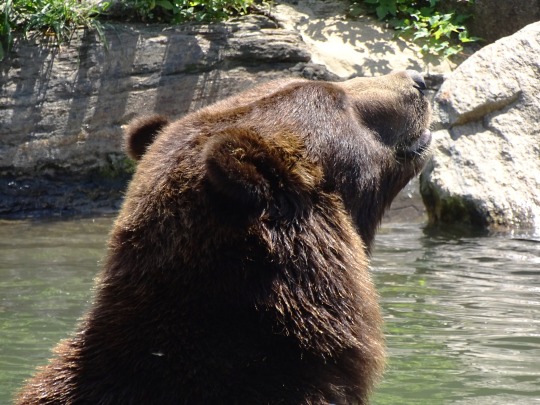
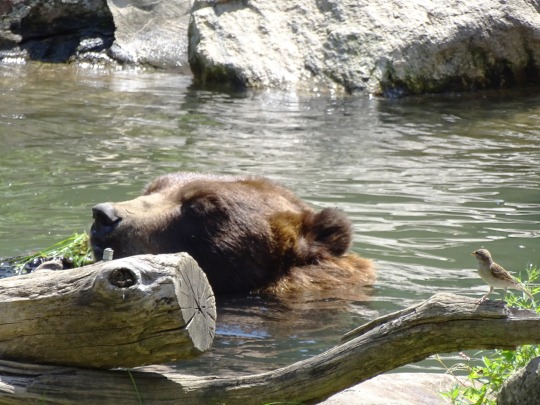

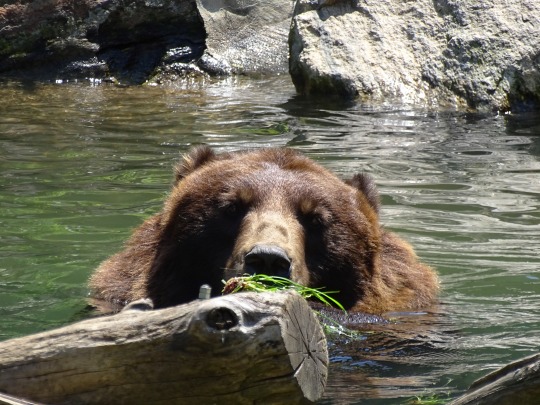



Brown Bear, Bronx Zoo (No. 3)
The brown bear is sometimes referred to as the bruin, from Middle English. This name originated in the fable History of Reynard the Fox translated by William Caxton from Middle Dutch bruun or bruyn, meaning brown (the color). In the mid-19th century United States, the brown bear was termed "Old Ephraim" and sometimes as "Moccasin Joe".
The scientific name of the brown bear, Ursus arctos, comes from the Latin ursus, meaning "bear", and from ἄρκτος arktos, the Greek word for bear.
Brown bears are thought to have evolved from Ursus etruscus in Asia. The brown bear, per Kurten (1976), has been stated as "clearly derived from the Asian population of Ursus savini about 800,000 years ago; spread into Europe, to the New World." A genetic analysis indicated that the brown bear lineage diverged from the cave bear species complex approximately 1.2–1.4 million years ago, but did not clarify if U. savini persisted as a paraspecies for the brown bear before perishing. The oldest fossils positively identified as from this species occur in China from about 0.5 million years ago. Brown bears entered Europe about 250,000 years ago and North Africa shortly after. Brown bear remains from the Pleistocene period are common in the British Isles, where it is thought they might have outcompeted cave bears (Ursus spelaeus). The species entered Alaska 100,000 years ago, though they did not move south until 13,000 years ago. It is speculated that brown bears were unable to migrate south until the extinction of the much larger giant short-faced bear (Arctodus simus).
Several paleontologists suggest the possibility of two separate brown bear migrations: inland brown bears, also known as grizzlies, are thought to stem from narrow-skulled bears which migrated from northern Siberia to central Alaska and the rest of the continent, while Kodiak bears descend from broad-skulled bears from Kamchatka, which colonized the Alaskan peninsula. Brown bear fossils discovered in Ontario, Ohio, Kentucky and Labrador show that the species occurred farther east than indicated in historic records. In North America, two types of the subspecies Ursus arctos horribilis are generally recognized—the coastal brown bear and the inland grizzly bear; these two types broadly define the range of sizes of all brown bear subspecies.
Source: Wikipedia
#Brown Bear#Grizzly Bear#Big Bears#ABC Islands bear#water#eating#bathing#original photography#summer 2019#Ursus arctos sitkensis#travel#Ursus arctos#Bronx Zoo#my favorite zoo#the Bronx#New York City#nature#outdoors#grass#tourist attraction#Sitka brown bear#tree#Eastern USA#USA#vacation#animal
25 notes
·
View notes
Photo
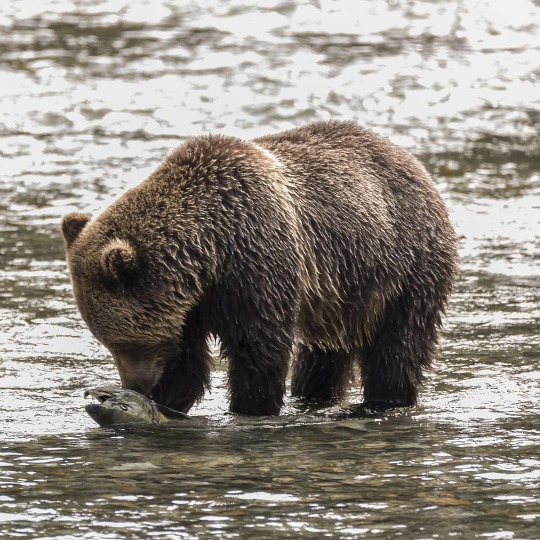
Credit © 📷 ✅ @wildlifeadventuresnortheastvi Grizzly Bear The grizzly bear (Ursus arctos ssp.), also known as the North American brown bear, is a large population of the brown bear inhabiting North America. Multiple morphological forms sometimes recognized as subspecies exist, including the mainland grizzly (Ursus arctos horribilis Height: 1 m (Large Adult, At the withers) Lifespan: 20 – 25 years (In the wild) Length: 2 m (Large Adult) Scientific name: Ursus arctos horribilis Mass: Male: 270 kg (Inland area population), Female: 130 – 200 kg (Large Adult) Did you know: Fewer than 1,500 grizzlies remain in the lower 48 states. livescience.com Grizzly bears were once numerous, ranging across North America from California to the Great Plains, and from Mexico all the way up into Alaska. As with many species, westward expansion, human transformation of the landscape, and fear led to near-eradication of grizzly bears in the continental United States. When the grizzly bear was listed under the Endangered Species Act (ESA) in 1975, the grizzly bear population in the lower 48 states was down to less than 1000 bears. Grizzly bears still occupy less than 2% of their former range in the lower 48, in 5 of 6 grizzly bear recovery areas. Is Brown Bear a Grizzly Bear? Grizzly bears and brown bears are the same species (Ursus arctos), but grizzly bears are currently considered to be a separate subspecies (U. a. horribilis). ... In North America, brown bears are generally considered to be those of the species that have access to coastal food resources like salmon. Grizzly and polar bears are the most dangerous, but Eurasian brown bears and American black bearshave also been known to attack humans. Some species depredate livestock on occasion, and somebears, such as Asiatic and American black bears, may destroy fruit or other crops, source especially.corn #grizzlybear #bear #bears #buteinlet #bc #animallife_world #canada #animallovers #beautifulbritishcolumbia #salmon #animalshots #salmonrun #eagleyeadventures #wildlifephotography #wildlife #nature #naturephotography #natgeowild #wildanimals #eagleeyephotographyuk #wildlifeadventuresnortheastvancouverisland https://www.instagram.com/p/B4k1rHLhdRL/?igshid=1ujl7wyyvi1hn
#grizzlybear#bear#bears#buteinlet#bc#animallife_world#canada#animallovers#beautifulbritishcolumbia#salmon#animalshots#salmonrun#eagleyeadventures#wildlifephotography#wildlife#nature#naturephotography#natgeowild#wildanimals#eagleeyephotographyuk#wildlifeadventuresnortheastvancouverisland
0 notes
Text
ive had the thought of a ~drama~ starring kaede kyoko and frankly i cant see anything else but constant pain
#i meant literal pain. physical pain. for kaede. she'd be so tired#(kaede voice) yIkes#outta violence || ooc.#tbh it s the same as imaginign my ocs in a dating sim. awful. terrible. everything going horribily wrong if you make mistakes#but everything going terrifyingly well if u do the right thing
0 notes
Photo

So I’m a liar. It’s not the first time and it won’t be the last. Between some job-related scrambling and a three-day-long headache that ended with a CAT scan and a few many fistfuls of Advil/Tylenol/HeavierStuff, I didn’t manage to get this thing online before the new year swung around.
The good news is, three days in, this year is basically the same as the last, so you can still listen to this. It’s cool. I promise.
I know 2016 was supposedly an annus horribilis -- and we did lose many more musical icons (not to be confused with Mandy Moore, Musical Icon) in a single revolution than we ever should* -- but honestly, if 2016 had ended on November 7th, I think we’d all be talking about the year just past in much different terms. And while I’m pretty dubious that 2017 will be anything but a disaster for our most vulnerable and an introduction to vulnerability for a whole bunch more of us (who hadn’t considered we’d be there, perhaps ever, in our lifetimes), the truth is 2016 itself was actually a pretty good year -- personally, and I think collectively. So while next year’s mixtape might just be a track-list etched by a thousand bent fingernails on the walls of the work camp, this year’s mix pretty fairly reflects what was, by and large, a positive experience when lived from day to day. I’m gonna miss it like candy.
The seventh** edition of my year-end mixtape arrives in much the same way last year’s did: with maybe six songs that were locks to make this list from the jump, and then a lot of rooting through the 300-odd tracks on my Top Tracks of 2016 playlist***. I’ve, as always, avoided any big pop hits -- otherwise this years list might just be O.T. Genasis feat. Young Dolph on loop -- but I’ve backed away from the tradition of keeping tracks from my Top Ten albums off of the list. Truth is, even when I wasn’t listening to those albums, it was certain tracks from those albums I kept coming back to, and this year’s mix would feel incomplete without them. They’re the anchor pieces.
If last year’s mix trended darker, this year’s feels a little brighter, a little more hopeful. It's not all wide-eyed; if anything, this year’s selections are a little more introspective than the last. But even its denser moments generally offer something to dream on.
It’s also the first mix I’ve made where every track is available on Spotify****. That’s probably largely reflective of my listening habits -- Spotify’s ease of use, and of playlist compilation, led me to spending less time on SoundCloud and the like, because even once you find something good, it’s frankly a pain to grab music from elsewhere and then sync it to Spotify, especially when I often go weeks without touching my MacBook. I do 90% of my personal computing on my mobile now. The medium is the message, or something. (The message, however, is rarely on Medium.)
Enough of the rambles; on with the show.
Makeup For The Silence - Best Of 2016
Empty - Garbage
Purge - Frameworks
Fall On Me - Kitten
Bury It - CHVRCHES (feat. Hayley Williams)
Tiger Hologram - Swet Shop Boys
Zadok - Myrone
Bottle It Up - Sherwood
Me & Magdalena (Version 2) - The Monkees
Sell My Head - Tancred
Humblest Pleasures - Turnover
Blood In The Cut - K. Flay
Goodness, Pt. 2 - The Hotelier
Broken Drum - Cash Cash (feat. Fitz of Fitz & the Tantrums)
I Am Chemistry - Yeasayer
No Time Valentine - Roy English
All Night - King Neptune
Rebecca - Against Me!
U-turn - Tegan & Sara
The Sound - The 1975
May I Have This Dance - Francis & the Lights
Deep Six Textbook - Let’s Eat Grandma
17th Street Treatment Centre - John K. Samson
click image to download
I’ll be back tomorrow with some more thoughts on the Year In Music and my personal listening habits, and then we’ll get into the business of counting down. I’m not sure I’ll go in quite as deep as I typically do this time around (that aforementioned work stuff, again), but I’m not ruling it out either.
*one of whom will be showing up on my Top Ten in the coming weeks
**You can always find the complete collection of mixes which have appeared on Makeup For The Silence, as well as all the playlists I’ve contributed to elsewhere, right over here.
***I’ve archived my 2016 list and rolled my 2017 one right on top, so if you were subscribed, you should be following 2017 now. If not, follow along right here.
****...for now. Of course, tracks on Spotify come and go on the wind and the whim, so I still strongly recommending downloading. That said, you can stream it here.
#mixtape#mix cd#download#top 10#top ten#2016#makeup for the silence#makeupforthesilence#garbage#frameworks#kitten#CHVRCHES#swet shop boys#myrone#sherwood#monkees#tancred#turnover#k.flay#the hotelier#cash cash#yeasayer#roy english#king neptune#against me!#tegan and sara#the 1975#francis and the lights#let's eat grandma#john k. samson
24 notes
·
View notes